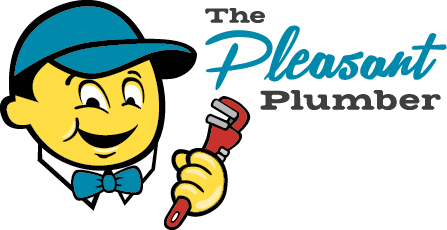The modern plumbing system works seamlessly to provide comfort, cleanliness, and convenience. Many appliances and components — toilet, sink, bathtub, washing machine — are interconnected through pipes and drains. When these cease utilities to function, it can disrupt our day-to-day activities and even incur expenses when damage occurs.
Clogged drains and pipes may start as a minor issue, like water or sewage backing up or drains emitting a foul odour, but can quickly escalate and turn hazardous if not fixed. According to the Canadian Institute of Actuaries, water damage from leaky pipes, toilets, or appliances is one of Canada’s top house insurance claims.
Causes of Clogged Drains
Preventing clogged drains starts with awareness and recognition of their causes. This can be difficult given the complexity of the system. Typically, the plumbing system consists of one big main line and smaller sublines running off it. If the water main is clogged, it will likely affect the whole building. Meanwhile, if something is stuck in one of the sublines, the issue may only be isolated to one area.
The blockage can build and lodge anywhere, and it helps to narrow down the possibilities.
- Tree Roots
Tree roots are widely known to be the primary cause of blockage and clogs in the main line. As living organisms, trees seek water. Naturally, roots are drawn to even the tiniest cracks and leaks in your pipe, and once inside, they can quickly grow larger, eventually obstructing water flow and breaking the pipe.
Clearing roots from pipes can be expensive and complex. If you are in a wooded area or if your water and sewer lines run in your yard, it is important to keep an eye against tree root invasion.
- Toiletries and Hygiene Products
There’s a reason why signs only remind us to only flush toilet paper and natural waste down the toilet. Some products are dangerous to plumbing pipes. Feminine hygiene products and baby diapers are non-biodegradable and contain cotton and other fibres that have huge potential to clog and attract other matters.
Soaps must also be kept away from pipes. Traditional soap bars are made with grease or fat. The fat combined with minerals in water forms a hard residue called soap scum that clings to pipes.
While advertised safe, you shouldn’t also just flush tissue paper, wipes, and paper towels carelessly to avoid build-up.
- Hair
Hair naturally falls from the scalp when you shower and can find its way down the drain. At some point, it can bunch together and slow water flow or totally block it. For good measure, place small screens to protect the drain and regularly sweep the hair out. You can also use pliers or long tweezers to pull out hair strands hanging on the drain.
- Objects
Sometimes, it’s hard to track objects that come near your drain. You have food waste, dirt, plastics, and rocks all around you that are possible clogging agents. Sometimes, you may also accidentally drop something in, like jewellery, children’s toys, and fabrics. Unfortunately, if these objects are too large for your pipes to handle, they will end up getting stuck and clogging your drain and plumbing.
- Fat, Oil, and Grease
If plumbing had enemies, they would be fat, oil, and grease. The harmful effects of these substances are highly publicized, so it is only fitting to keep them from going down your drain.
Fats are sticky and tend to bind with other substances that come along with it. They would eventually harden, accumulate and then, clog your drain. If you think that liquid oil and grease are the only things you should be mindful of, other things that contain fat are also better tossed into the trash can, including trimmings of meat, butter, chocolate, cream, and more.
- Mineral Build-up
Pipe scale is a mineral deposit that forms within the pipe as water flows through it. Scale deposits are usually dissolved minerals — calcium, magnesium, and other metallic elements — in hard water. When the scale begins to collect, it attracts more scale until it becomes too thick that it obstructs the water flow. The mineral build-up is not exclusive inside pipes, scale deposits can also be found in water-using appliances, like washing machines and dishwashers.
- Disintegration
Water blockage is not only a result of something getting inside the pipes. The quality of your home plumbing could also be to blame. The disintegration of pipes is not uncommon. They can age, joints come apart, sag, and erode soil away. In winter, pipes can also freeze hard, causing them to shift under immense pressure. When these happen, your plumbing system will not be able to work as efficiently as before; hence, the clogging.
- Slope
Many water systems rely on gravity to function. As a result, it is crucial that the slope of the sewer and water pipes are correctly measured, or it will result in drainage problems and blockage. An insufficient slope slows down water movement, contributing to clogging and other issues. The general rule is, the slope of pipes should be 1/4 inch vertical drop for every 1 horizontal foot.
- Undersized
Your pipes must be selected and designed based on demand. Undersized pipes can be the root cause of your drainage problems. The size of the mainline is determined by the number of water-using units discharged to it. The more water-using appliance you have, the larger the diameter of the pipe should be. A widely accepted standard of a residential main drain is 4 inches in diameter.
- Overload
When improperly calculated and designed, the pipes may work beyond their capacity. This is particularly true during renovations. Homeowners may buy a new bathtub or add another bathroom. Most of the time, people add more appliances and fixture into a house or building without checking its plumbing history or considering the added load they have on their existing plumbing.
Fixing Clogged Drain
Fortunately, clogged drains can easily be fixed, especially when caught early on. Here are some measures you can do to resolve the problem and prevent it from happening again:
- Proper Garbage Disposal
Given that almost everything could be a clogging agent, cleaning clogged drains starts by guaranteeing that trashes are properly sorted and thrown out. Don’t let food waste accumulate in your kitchen sink. Dispose of leftovers, grease, oil, and other matters into the can rather than flushing them down the drain.
You can also invest in drain stoppers and strainers to trap any material from flowing down the pipe.
- Clean Your Pipes and Drain
To prevent scum and scale from accumulating, take the time to clean your pipes. Scrape off the reachable mess and throw them out with the garbage. You can also run boiling water down the drain, followed by a dollop of dish detergent and then more hot water to soften the clog. If that doesn’t work, you might need to use a chemical liquid, but do so with caution.
Experts also advise that, to keep your plumbing healthy, fill the sink or tub with water and let it drain to create pressure, flushing the pipes and removing debris along the way. Do this once or twice a month.
- Venting
Think of your pipe like a straw. If you cover one end of the straw, it creates a vacuum and the water won’t drain until you lift your finger. Always make sure that enough air is entering. First, check that nothing is blocking your vent pipe opening. Also, check your sink for gulp valves. These valves prevent sewer gas from escaping the drain line and let air in. If you fill the sink with water and drain it all at once, you should hear air getting sucked into the gulp valve. If not, you might need a replacement soon enough.
- Regular Maintenance
Lastly, it is important that your drains and pipes get the utmost care. Your plumbing system works all around the clock and vulnerable to wear and tear. Making sure that it receives regular check-ups reduces the possibility of further damage from occurring. Inspect the pipes for slope, condition, and build-up. Analyze the water quality of your home. Hard water has more mineral content, which contributes to pipe scaling and corrosion.
- Camera Inspection
In extreme cases, you may need a camera inspection to check the plumbing components deep underground. These may provide you a clearer picture of the condition of your pipes, determine the issue, and accurately pinpoint the location of this issue. Video inspection eliminates guesswork and accelerates the repair process.
Clogged drains can be a nuisance. As always, it is best to fix the problem sooner than later to avert costlier repairs. If you need a service plumber for your clogged drains, get in touch with The Pleasant Plumber. We provide drain and sewer cleaning services in Winnipeg and surrounding areas. Call us today at (204) 930-9630!





